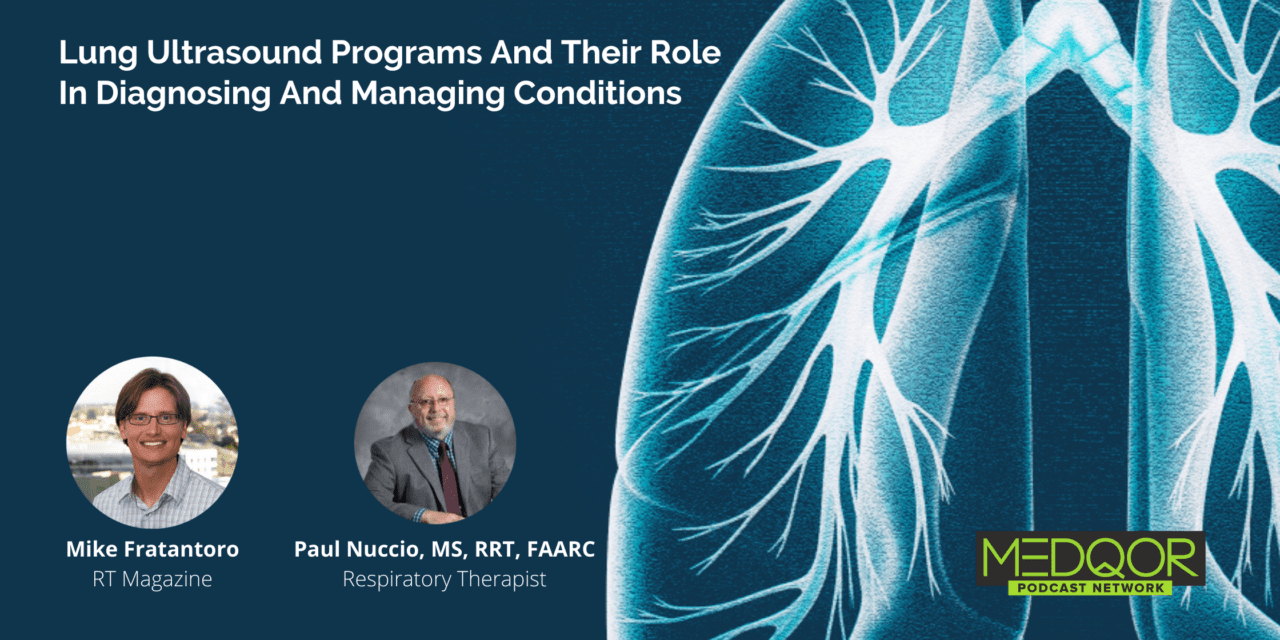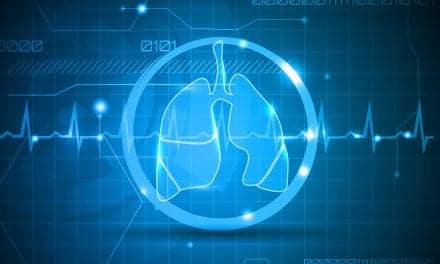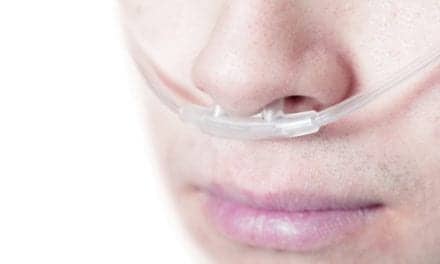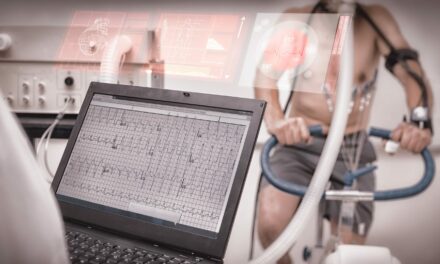On today’s episode, Mike Fratantoro discusses respiratory care and lung imaging technology, specifically the use of lung ultrasound for identifying and managing lung diseases. He’s joined by Paul Nuccio,MS, RRT, FAARC a respiratory therapist and pulmonary care educator and consultant.
Read Podcast Transcript
Mike Fratantoro:
Hi, and welcome to The MEDQOR Podcast Network. I’m Mike Fratantoro with RT Magazine. On today’s episode, we’re focusing on respiratory care and lung imaging technology, specifically the use of lung ultrasound for identifying and managing lung diseases. I’m joined by Paul Nuccio, a respiratory therapist and Pulmonary Care Director and consultant. Paul was most recently a faculty member at Boise State University, and a former Director of Pulmonary Services at Brigham and Women’s Hospital and the Dana-Farber Cancer Institute in Boston.
Paul Nuccio:
Oh, it’s a pleasure to be here, Mike. Thanks for having me.
Mike Fratantoro:
Before we begin, I wonder if you can tell us a little bit more about your career in respiratory care. How did it all start? Did you always know you wanted to get involved in healthcare and pulmonology?
Paul Nuccio:
Well, let’s see, I’ve been a respiratory therapist and a member of the AARC for 45 years this year, actually. And during that long career, I’ve done many different things, including cleaning respiratory equipment, clinical bedside treatments, teaching, managing both small and large departments. And I’ve also been involved with a fair amount of both bench and clinical research. I actually worked in a hospital prior to getting interested in respiratory. I was a transporter for a while and then an orderly for a while. And being an orderly, I got to go to all the critical emergencies, all the code 99 procedures that were going on. And interestingly, the person who was the code leader at that hospital was a respiratory therapist. And that’s what got me interested in pursuing a career in respiratory therapy.
Mike Fratantoro:
So we’re here today to talk about lung ultrasound and its applications in diagnosing and managing lung conditions. But before we do that, could you talk a little bit about what the existing, maybe the more traditional diagnostic tools that are available to pulmonary specialists and some of the pros and cons of each? What’s available in their “arsenal” when they need to find out what’s going on with the lungs?
Paul Nuccio:
The standard way that we do things in an intensive care unit, most of what I’m going to talk about today is in the critical care unit, or the ICU. And we very often will do chest x-rays, chest radiography. Sometimes we’ll have to send patients for CT scans or computed tomography scans. And then we’ll also sometimes send patients to the pulmonary function lab to get a spirometry or other more involved procedures done. We also get involved in doing bronchoalveolar lavage procedures sometimes with, sometimes without doing lung biopsies. We do lots of blood gases and there’s a variety of other things. And I’d like to talk a little bit about each one of these, if I could.
Paul Nuccio:
The chest x-ray has been around for a long time. Discovered back in the late 1800s. So it’s certainly, not by any stretch of the imagination, a new technology. And like anything, there’s pros and cons. Couple of the pros, they can easily help diagnose certain conditions in the lungs such as tumors. And they also provide us with a medium image quality, which is often quite acceptable. Couple of the cons, they do like a lot of the imaging studies, they provide patients with radiation exposure, too much of which can cause cells to mutate, can cause ionization and ultimately, lead to the patient developing cancer. So they’re certainly not without risk. Another problem with chest radiography is that the bones actually absorb the radiation. So they don’t always provide for the best possible image.
Paul Nuccio:
Then came along computed tomography, or CT scanning, which is usually done in a CT scan department. Although, there are some places that have the luxury of portable CT scanners. Those were invented back in the 1960s and ’70s. So they’ve been around for a while as well, but certainly not as long as the chest x-rays. Some of the pros for CT scans, they take a fairly short amount of time to do the study. Usually, 15 or 20 minutes. They produce very high-quality images. And they’re actually fairly easy to do and considered somewhat non disruptive. However, they do provide a fair amount of radiation exposure, like the chest x-rays do. And they often require the use of a type of contrast material or dyes that have to be injected into the patient, which can have their own set of hazards associated with them.
Paul Nuccio:
And in most cases, it typically requires a patient to be transported to another area of the hospital, which is extremely difficult for critically ill patients, particularly those patients that we care for who are on mechanical ventilators. So basically, it requires more people power. It requires people to transport the patient from the ICU down to the CT scanner. And then it requires personnel and the CT scan department as well.
Paul Nuccio:
On the next item, sometimes we perform spirometry or different other types of pulmonary function tests. These have been available for a long time, probably back since about the 1840s. So for quite a while. They’re fairly easy to access, within a hospital setting anyways. They provide a good reliability of their measurements and sometimes they help to facilitate consultations for additional respiratory services that perhaps the primary physician never even thought about. Some of the cons, there’s often limited capacity. And this is very often a problem in hospitals, because pulmonary function labs do both inpatients and outpatients and sometimes their capacity, particularly to do things to bedside, maybe quite limited.
Paul Nuccio:
It also may require transporting the patients out of the clinical area down to the pulmonary function lab. And there is often a delay in getting the testing result feedback back to the ordering physician. And part of that is because usually these tests have to sit around and wait for the pulmonary specialists, who actually interpret the results. And lastly, with the cons for spirometry and pulmonary function testing, it requires very close monitoring for the quality of the studies. Otherwise, it could be very easy to report inaccurate results.
Paul Nuccio:
Moving on down to my list anyways, we have BALs, or bronchoalveolar lavages and lung biopsies. And these have been performed probably since the mid-1970s. They are considered to be minimally invasive. Although, if you do a biopsy that would become more invasive. They do have the ability to readily sample alveolar contents, which could provide a good method to evaluate for certain opportunistic infections. Some of the drawbacks, it does require the insertion of a flexible bronchoscope into the subsegmental areas of the lung. And these procedures, since they usually require a lot of saline to be instilled into the lungs, are very often poorly tolerated.
Paul Nuccio:
In a critical care area, we also perform a fair number of arterial blood gas procedures, where we take a needle and syringe and stick it into the patient’s artery, usually a radial or a brachial artery, and draw out a sample of blood and then run it through a blood gas analyzer. And I do have to say that over my many years in the profession, I’ve seen a drop or a decrease in the amount of these procedures that are being done, probably because they are invasive. And beyond that, also the results are just a quick point-in-time sample, which can change minutes after the sample is drawn. So they still do do them and they do provide valuable information for us in the ICU, but the frequency of the procedure being done seems to have become less and less. So that’s kind of a summary of a lot of the different tools that we have at the bedside currently.
Mike Fratantoro:
Paul, what is lung ultrasound? How does the technology work? Just kind of the basics. And what is a typical test or ultrasound session look like as it relates to the lung?
Paul Nuccio:
Well, lung ultrasound is just like any other types of ultrasounds, which incorporates sound waves that are picked up through a probe. And they’re used to evaluate certain parts of the body. Now, initially, people didn’t look to ultrasound too much to evaluate the lungs since normally ultrasounds are not transmitted through structures that are filled with gas, such as we find in the lungs. And because of that, the lung parenchyma is not normally visible beyond the pleura. But because injury to the lung creates an abnormal gas and tissue interface, artifacts will be produced by the ultrasound, which make it possible for lung ultrasound to accurately assess lung aeration in those patients who develop acute lung injury.
Paul Nuccio:
So people have begun to see real value of that. So many of the conditions that lead to a patient developing severe shortness of breath, such as pulmonary edema, pleural effusion, pneumothorax, and pneumonia, all have distinct sonographic appearances, enabling both rapid and also accurate bedside identification.
Mike Fratantoro:
So Paul, what diseases or conditions, in particular, can it be useful in identifying or monitoring? I mean, you mentioned a few already. But are there any others? Or if you didn’t want to talk a little bit more about those specific conditions.
Paul Nuccio:
Right. So when I’m talking about lung ultrasound, I’m really talking about ultrasound that’s done at the point of care, so at the bedside, rather than bringing a patient down to some ultrasound suite in a different part of the hospital. So point-of-care ultrasound provides a rapid, affordable and dynamic modality for the evaluation of the airway anatomy and the facilitation of endotracheal intubation when it’s performed by the right type of clinician. So it can be very helpful in initiating mechanical ventilation on patients by identifying the patient’s actual anatomical features and help to confirm proper placement of the endotracheal tube.
Paul Nuccio:
In terms of the ventilator patients, it’s extremely valuable in identifying not so much lung aeration, but problem areas within the lungs. So if you’re developing an area of the lung with lung injury, because of high pressures or high volumes, you’ll be able to pick up on that with lung ultrasound. So evaluating again, like I said before, for pneumonia, pneumothorax or recognizing an inadvertent bronchial intubation, a mainstem bronchial intubation could be valuable as well. Evaluating patients with obstructive lung disease may not be quite as valuable, unless there’s some other complication going on, because again, as I said previously, if the lungs are just filled with air, then you’re not going to pick up on that as readily as you would if there was some type of consolidation.
Mike Fratantoro:
So Paul, obviously, COVID is still on everyone’s minds right now. Is there any data or research out there that lung ultrasound is not only being used for COVID patients, maybe for pneumonia, but that it’s effective in monitoring the condition?
Paul Nuccio:
Yeah. So that’s a great question. And I have found that there has been studies that have shown lung ultrasound to be extremely valuable when it comes to COVID-19 safety protocols, both for the safety of the patient, but more importantly for the safety of the staff who are working around the patient. So again, anytime you can do something that’s non-invasive like ultrasound, as opposed to invasive like the lung biopsy or something like that, it’s going to be preferable to ensure that staff are safe when they’re doing these procedures. So I hope to be talking more about this issue in the actual article, because like I said, there are now studies that are beginning to show the value of lung ultrasound for patients with COVID-19.
Mike Fratantoro:
Compared to some of the diagnostic tools that we mentioned earlier, what are the benefits of lung ultrasound compared to radiography or pulmonary function testing and the others?
Paul Nuccio:
Well, I think probably the biggest benefit is that it can be made readily available right at the bedside or the point of care. It can really be performed at any time of the day or night and can provide for the most part, instantaneous results. And that will also be part of my reasoning for why I think respiratory therapists are so valuable and in such a great position to be the ones performing these studies.
Mike Fratantoro:
So obviously, we’re talking to an audience of respiratory therapists and pulmonologists. So how do they fit into a lung ultrasound program? What professional skills do RTs have that might make them the right fit for this job?
Paul Nuccio:
Yeah. So technology has often been considered to be the bread and butter of the RTs work. They are technically savvy and clinically competent. And studies have now demonstrated that respiratory therapists can fill this role of doing lung ultrasound quite well. Respiratory therapists, they’re present in the critical care areas of the hospital 24/7. And with their already superior technical skills, I believe they are ideal candidates to perform these procedures. Pulmonary physicians are great candidates as well, although their availability is not as consistent as that of the respiratory therapists. RTs are there constantly. So when they’re evaluating the patient on a ventilator or performing other procedures, this is just one more thing that they can be doing.
Mike Fratantoro:
So Paul, you’re a former Pulmonary Care Director. So if you’re the director of a department and you’re not necessarily using lung ultrasound right now, but you’re interested in getting more information and maybe setting up a training or buying some equipment, so what would the process look like for you to begin steps to getting involved or at least inquiring about this kind of technology?
Paul Nuccio:
Yeah. So I think the first thing I would probably do is contact a company whose equipment I might be interested in utilizing. And pick their brains and find out more information about the equipment. But more importantly, find out information about what educational services they have to offer a department such as mine, because I need to be evaluating that information in order to be sure that it’s going to be a good fit within my department. And there’s a lot of different type of equipment out there. So it’s important that I evaluate that, I think, right up front. And then once I’ve done that and decided it would be a good fit within my department, then I need to start exploring throughout the hospital different groups within the hospital, because let’s face it, like anything, there are groups within a hospital that perform ultrasound.
Paul Nuccio:
So you need to figure out a way to tactfully approach those people and convince them basically that they don’t want to be in the ICU, they don’t want to be on call 24/7 and why it would be beneficial for them to work with our department to help us to create a successful lung ultrasound program. And I think it’s kind of a win-win situation for both us and them. But the way it’s approached will determine whether one is successful or not, I think.
Mike Fratantoro:
What added value can RTs bring to their department? Not only their department, but to the hospital, assuming they’re trained in lung ultrasound? It’s another added component that they can bring to the table and make themselves a little bit more valuable. Not only as individuals, but as a department, too, I would think.
Paul Nuccio:
Right. It’s always a challenge for respiratory therapy directors to try to explain to administration what your value is if it’s not tied to little tasks that generate billable volume. But I think respiratory therapists are outstanding, highly-trained clinicians who belong at the bedside. That’s where they provide the most value. Their value can be measured by how quickly they can provide benefit to the patient, and how quickly the patient can be successfully discharged from the ICU and the hospital, with help of the things that the respiratory therapists do. And I believe that RTs performing lung ultrasound is just another of the many tools in our toolbox that can lead to better patient outcomes.
Mike Fratantoro:
Great. So thanks for joining us today, Paul. Anyone in the audience interested in more information on lung ultrasound, Paul is currently writing a feature length article for our May-June issue, which will be published in the beginning of May. That’ll be available on respiratory-therapy.com. So if you’re interested in more information on the subject, please stay in touch with us. And we’ll be back in the future with another topic. Thanks again.














